 OER for ANT 101
OER for ANT 101
Classic: Articles and Works in Anthropology
“Body Ritual Among the Nacirema.” Miner, Horace. 1956. “Body Ritual Among the Nacirema.” In: American Anthropologist, New Series, 58(3), pp. 503-507.
This article is basically a satire of ethnographic research. Miner studies Americans as if they were an exotic tribe. While this piece is not without critique, it provides students with ways of thinking about the work of anthropology. This is a library resources with remote access via John Jay College library.
“Introduction: The Subject, Method and Scope of this Inquiry” Malinowski, Bronislow. 1922/2002. “Introduction: The Subject, Method and Scope of this Inquiry” In: Malinowski Collected Works Vol. II, The Argoanuts of the Western Pacific.
As far of ethnographies go, this is a piece that explains what the method is supposed to be, and it provides a picture of what is supposed to be done and thus is instructive for students.
“The Ethnographer” Borges, Jorge Luis. 1998. “The ethnographer.” In Collected fictions, pp. 324-325.
This one is a very short story, that at its worst, allows it to be debunked.
Contemporary: Articles and Works in Anthropology
“Forced Out: For Many Poor Americans, Eviction Never Ends” Desmond’s ethnographic study of housing and poverty in Milwaukee. This article is engaging for students and a piece for urban ethnography that John Jay students could imagine undertaking.
“How Napoleon Chagnon Became the Most Controversial Anthropologist” Eakin, Emily. 2013. “How Napoleon Chagnon Became the Most Controversial Anthropologist.” New York Times Magazine, February 13, 2013.
This piece opens an interesting debate on how people often imagine anthropology, but also the inner workings of the discipline, its ethical debates and contentious discussions.
“Anthropology and Counterinsurgency: The Strange Story of their Curious Relationship” Mcfate, Montgomery. 2005. “Anthropology and Counterinsurgency: The Strange story of their curios relationship.” Military Review 85(2): 24-38.
This article is part of the debate about the public uses of anthropology and allows students to connect to the debate in concrete ways.
“Knowing the Enemy: Can Social Scientists Redefine the “War on Terror?” Packer, George. 2006. “Knowing the Enemy: Can Social Scientists Redefine the “War on Terror?” The New Yorker, December 18, 2006.
Similar to the Montgomery piece, this also opens the debate about the public use of anthropology.
“Coloniality of Power and Eurocentrism in Latin America” Quijano, Aníbal. 2000. Coloniality of power and Eurocentrism in Latin America. International Sociology 15(2): 215-232.
By now, this piece could actually be called “a classic”. Some consider it complicated but students seem to engage with it pretty easily.
This is a library resource. Remote access available through login with John Jay credentials.
Databases in Anthropology (for articles)
|
The complete archive from 1888 to 1994 of the award-winning magazine, which features in-depth coverage of cultures, nature, science, technology, and the environment; and spectacular photographic essays. Alternate access via library barcode Access: CUNY |
|
|
|
An interdisciplinary collection of high quality, peer reviewed journals. Alternate access via library barcode Access: CUNY |
|
|
|
Provides accesses to journals in anthropology, criminology, economics, law, geography, policy studies, psychology, sociology, social work, and urban studies from 1983 to the present and indexes material from 1929 to 1983.Try searching on Anthropology and Ethnography and Culture. Alternate access via library barcode. Access: CUNY |
|
|
|
Contains core coverage journals dating back to 1895, and some priority coverage journals. Also includes full text for many books, monographs, and conference papers. Alternate access via library barcode. Access: CUNY |
